Best Ayurvedic Medicine For Candida Yeast Infection
Candida is a type of yeast or fungus that is commonly found on the skin, in the mouth, digestive tract, and vaginal area. The most common species of Candida that causes infections in humans is Candida albicans.
Under normal circumstances, Candida is present in small amounts and does not cause any harm. However, certain factors can disrupt the balance of microorganisms in the body, leading to an overgrowth of Candida and the development of an infection called candidiasis.
Candidiasis can occur in various parts of the body, including the mouth (oral thrush), genital area (vaginal yeast infection), skin folds, and the bloodstream (systemic candidiasis). Symptoms may vary depending on the location of the infection, but common signs include itching, redness, swelling, and the presence of a white, cottage cheese-like discharge.
Risk factors for candidiasis include a weakened immune system, certain medical conditions such as diabetes or HIV/AIDS, hormonal changes, use of antibiotics or immunosuppressant medications, and poor hygiene.
Treatment for candidiasis typically involves antifungal medications, such as topical creams, oral tablets, or suppositories, which help eliminate the Candida fungus and relieve symptoms. It’s important to consult with a healthcare professional for an accurate diagnosis and appropriate treatment, especially if the symptoms persist or recur.
Causes Of Candida Yeast Infection
Candida albicans infections, commonly known as yeast infections, are quite common during the reproductive years. Candida albicans is a yeast that naturally resides on the skin and in the intestines, and it can migrate to the vagina. It’s important to note that yeast infections are not sexually transmitted. The following factors increase the likelihood of developing vaginal yeast infections:
- Pregnancy: Hormonal changes during pregnancy can disrupt the natural balance of microorganisms in the vagina, making it more susceptible to yeast overgrowth.
- Diabetes: Uncontrolled diabetes can create an environment conducive to yeast growth.
- Weakened immune system: Certain conditions or medications, such as corticosteroids or antineoplastic drugs, can weaken the immune system and increase the risk of yeast infections.
- Intrauterine device (IUD) use: Some women may experience an increased risk of yeast infections when using an IUD.
- Tight underwear: Wearing tight underwear that doesn’t allow for proper air circulation can create a warm and moist environment that promotes yeast overgrowth.
- Antibiotic use: Antibiotics can disrupt the natural balance of bacteria in the vagina, making it easier for yeast to proliferate. This is because antibiotics not only target harmful bacteria but also beneficial bacteria that help keep yeast in check.
Yeast infections may occur more frequently just before menstruation. After menopause, yeast infections become less common, except in cases where hormonal therapy is being used.
It is rare for male sexual partners of women with vaginal yeast infections to become infected themselves.
Diagnosis And Treatment Of Candida Yeast Infection
Diagnosis and Treatment of Candida Yeast Infection
Diagnosis:
1. Medical Evaluation: If you suspect a Candida yeast infection, it is important to consult a healthcare professional for a proper diagnosis. They will review your symptoms, and medical history, and conduct a physical examination.
2. Examination of Discharge Sample: A sample of the discharge from the affected area, such as the vagina or mouth, may be taken for further analysis. The sample can be examined under a microscope to check for the presence of Candida yeast or other microorganisms.
3. Culture Testing: In some cases, a culture test may be performed, where the sample is placed in a growth medium to encourage the growth of Candida yeast. This helps identify the specific strain of Candida and determine its susceptibility to antifungal medications.
Treatment:
The treatment of Candida yeast infection typically involves antifungal medications, which can be administered topically or orally, depending on the severity and location of the infection. Here are the treatment options:
1. Topical Antifungal Medications: These are available as creams, ointments, or suppositories that are applied directly to the affected area, such as the vagina or skin folds. Commonly used antifungal agents include clotrimazole, miconazole, and nystatin.
2. Oral Antifungal Medications: For more severe or recurrent infections, oral antifungal medications such as fluconazole or itraconazole may be prescribed. These medications work systemically to target the Candida yeast throughout the body.
3. Treatment Duration: The duration of treatment can vary depending on the location and severity of the infection. It is important to complete the full course of medication as prescribed, even if the symptoms improve before the treatment is completed.
4. Underlying Causes: Addressing any underlying causes or predisposing factors is crucial to prevent recurrent infections. This may involve managing conditions like diabetes, reducing the use of antibiotics, maintaining good hygiene practices, and adopting a balanced diet.
It’s important to consult with a healthcare professional for an accurate diagnosis and appropriate treatment plan for Candida yeast infection. They can provide personalized recommendations based on your specific condition and medical history.
Ayurvedic Medicine For Fungal Infection In Private Parts
Ayurveda, a traditional system of medicine originating from India, offers various herbs and formulations that are believed to possess antifungal properties.
It’s important to note that the effectiveness of these herbal remedies may vary, and it is always recommended to consult a qualified Ayurvedic practitioner before using any herbal products.
Here are some Ayurvedic herbs and formulations commonly used for their potential antifungal properties:
1. Neem (Azadirachta indica): Neem leaves and neem oil are known for their antifungal, antibacterial, and antiviral properties. They are used in various Ayurvedic preparations for skin conditions, including fungal infections.
2. Turmeric (Curcuma longa): Turmeric is a well-known spice in Ayurveda and has potent antimicrobial and antifungal properties. It can be used both internally and topically for its potential therapeutic benefits.
3. Garlic (Allium sativum): Garlic possesses antifungal, antibacterial, and antiviral properties. It is commonly used in Ayurveda to support immune function and address fungal infections.
4. Pippali (Piper longum): Pippali, also known as long pepper, is used in Ayurveda for its antifungal and antibacterial properties. It is often incorporated into Ayurvedic formulations for respiratory and digestive health.
5. Haridra (Curcuma longa): Haridra, commonly known as turmeric, has antimicrobial properties and may help combat fungal infections. It is used both internally and externally in Ayurvedic medicine.
6. Nimba (Azadirachta indica): Nimba, also known as neem, is a powerful antifungal herb. It is used in various Ayurvedic preparations for skin disorders, including fungal infections.
7. Gandhak Rasayana: This Ayurvedic formulation contains purified sulfur (gandhak) and is believed to have antifungal properties. It is used in the treatment of various skin infections, including fungal conditions.
8. Mahamanjisthadi Kwath: This herbal decoction contains several ingredients, including Manjistha (Rubia cordifolia), Neem (Azadirachta indica), and Giloy (Tinospora cordifolia). It is traditionally used to support skin health and may have antifungal properties.
Remember, Ayurvedic herbs and formulations should be used under the guidance of a qualified Ayurvedic practitioner, who can assess your individual needs and recommend the appropriate herbs and dosages based on your specific condition.
Best Antifungal Cream For Private Area
Here is a list of commonly used antifungal drugs:
1. Fluconazole (Diflucan): Fluconazole is an azole antifungal medication used to treat a variety of fungal infections, including vaginal yeast infections, oral thrush, and systemic fungal infections.
2. Amphotericin B (Fungizone): Amphotericin B is a polyene antifungal drug used to treat severe systemic fungal infections. It is often reserved for serious infections due to its potential side effects.
3. Ketoconazole (Nizoral): Ketoconazole is an azole antifungal medication used to treat fungal infections of the skin, nails, and mucous membranes. It is available in various forms, including tablets, creams, and shampoos.
4. Itraconazole (Sporanox): Itraconazole is an azole antifungal drug used to treat a wide range of fungal infections, including systemic infections, as well as fungal infections of the skin, nails, and mucous membranes.
5. Terbinafine (Lamisil): Terbinafine is an antifungal medication used to treat fungal infections of the skin, nails, and scalp. It is available as a cream, gel, or tablet.
6. Voriconazole (Vfend): Voriconazole is a broad-spectrum antifungal drug used to treat serious invasive fungal infections, including aspergillosis and candidiasis.
7. Caspofungin (Cancidas): Caspofungin is an echinocandin antifungal medication used to treat invasive fungal infections, such as candidemia and invasive aspergillosis.
8. Griseofulvin (Grifulvin V): Griseofulvin is an antifungal drug used to treat fungal infections of the skin, hair, and nails, such as ringworm and athlete’s foot.
9. Nystatin (Mycostatin): Nystatin is an antifungal medication used to treat fungal infections of the skin, mouth, and intestinal tract. It is often used topically or as an oral suspension.
10. Clotrimazole (Lotrimin): Clotrimazole is an antifungal medication available in various forms, including creams, lotions, and vaginal suppositories. It is used to treat fungal infections of the skin and mucous membranes, including vaginal yeast infections.
Note: Please note that this is not an exhaustive list, and there are many other antifungal drugs available. The choice of antifungal medication depends on the specific fungal infection, its severity, and individual patient factors.
It is important to consult with a healthcare professional for an accurate diagnosis and appropriate treatment plan.
Prevention of Candida Yeast Infection
While it may not always be possible to prevent Candida yeast infections entirely, there are several steps you can take to reduce the risk of developing an infection. Here are some preventive measures:
1. Maintain good hygiene: Keep the affected areas clean and dry, especially in warm and moist environments where yeast tends to thrive. Avoid using harsh soaps or hygiene products that may disrupt the natural balance of microorganisms.
2. Practice proper genital hygiene: When cleaning the genital area, use mild, unscented soap and water. Avoid douching, as it can disturb the natural vaginal flora and increase the risk of infections.
3. Wear breathable clothing: Opt for breathable fabrics such as cotton underwear and avoid tight-fitting clothes that can trap moisture and heat, creating an ideal environment for yeast to grow.
4. Change damp clothing promptly: After swimming or exercising, change out of wet or sweaty clothing as soon as possible to prevent moisture buildup.
5. Limit or avoid irritants: Avoid using irritating substances in the genital area, such as scented tampons, pads, or harsh feminine hygiene sprays. These can disrupt the natural pH balance and irritate the delicate tissues.
6. Manage underlying conditions: If you have an underlying condition such as diabetes, it’s important to manage it effectively to keep blood sugar levels under control. Elevated blood sugar levels can promote yeast overgrowth.
7. Practice safe sex: Use barrier methods such as condoms during sexual activity to reduce the risk of sexually transmitted infections that can increase the likelihood of yeast infections.
8. Limit antibiotic use: Antibiotics can disrupt the natural balance of microorganisms in the body, making it easier for Candida yeast to multiply. Use antibiotics only as prescribed by your healthcare professional and discuss potential alternatives or probiotic supplementation to support a healthy balance of microorganisms.
9. Avoid unnecessary or prolonged use of corticosteroids: Prolonged use of corticosteroids can weaken the immune system and increase the risk of yeast infections. Follow your healthcare professional’s instructions for corticosteroid use and discuss any concerns.
10. Follow a healthy lifestyle: Maintain a balanced diet, get regular exercise, manage stress levels, and get enough sleep. A healthy lifestyle can support a strong immune system, which plays a vital role in preventing infections.
Note: If you experience recurrent or persistent yeast infections, it is recommended to consult with a healthcare professional for further evaluation and personalized advice.
They can assess your specific situation and provide appropriate recommendations to help prevent future infections.

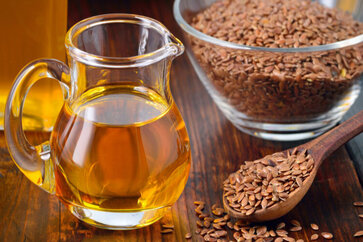
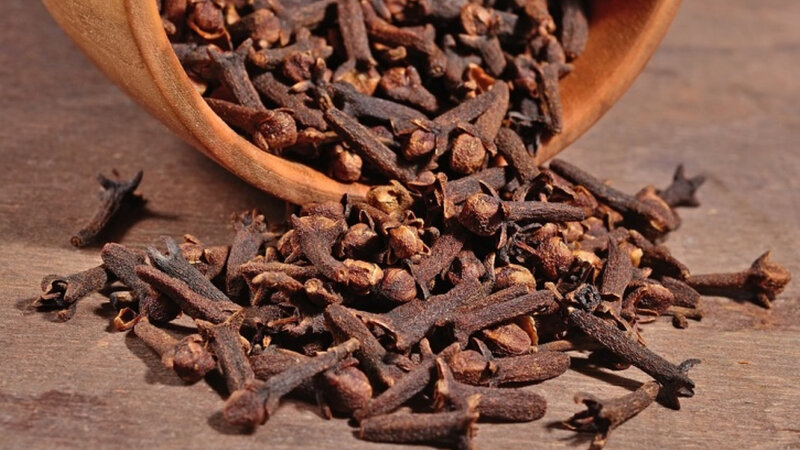

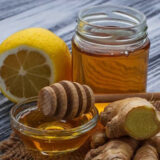


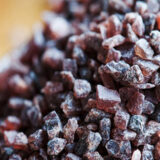



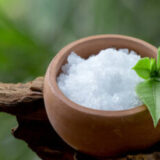










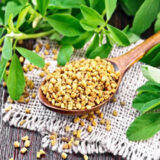

Can you please provide some diagnostic test for Candida??????
Thanks!!!!